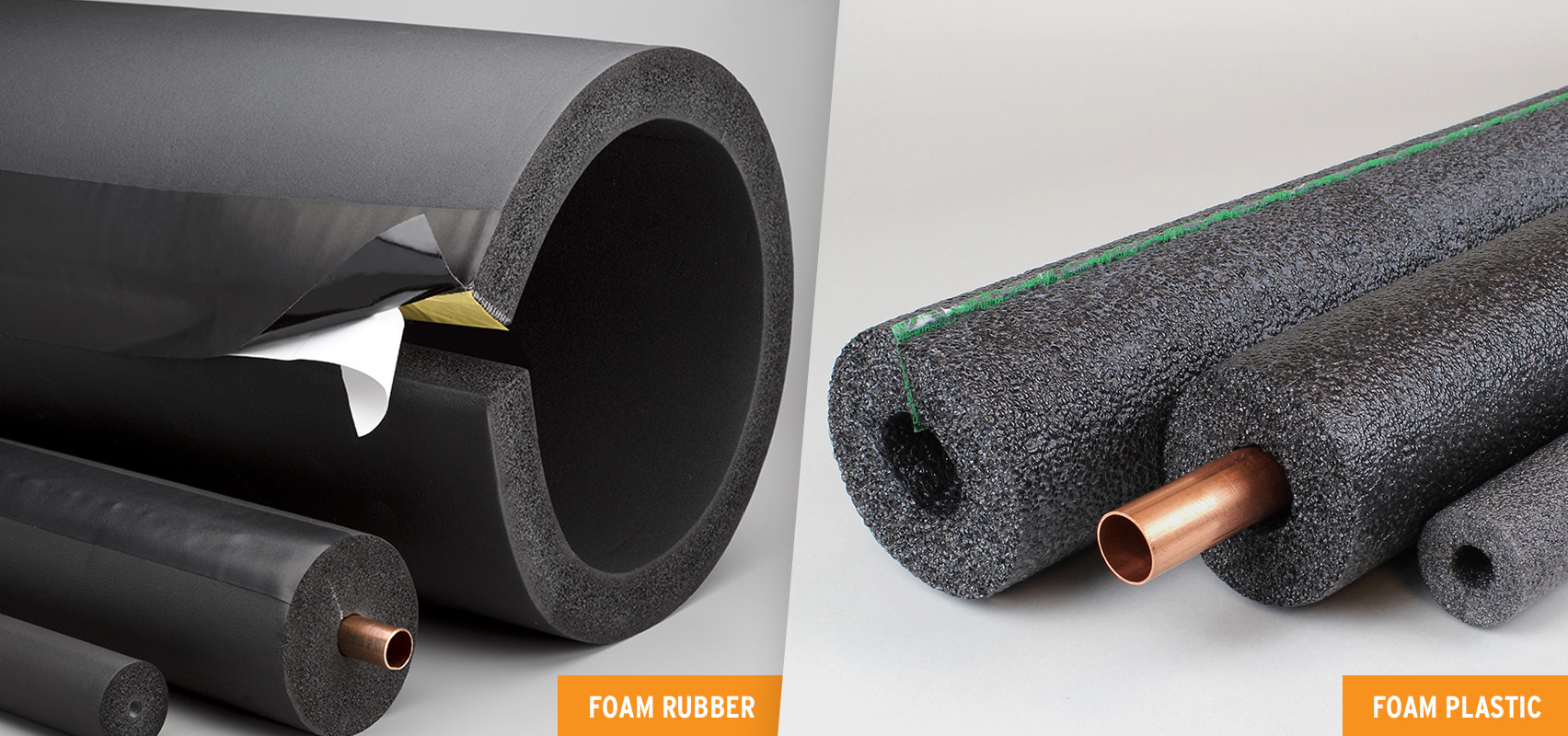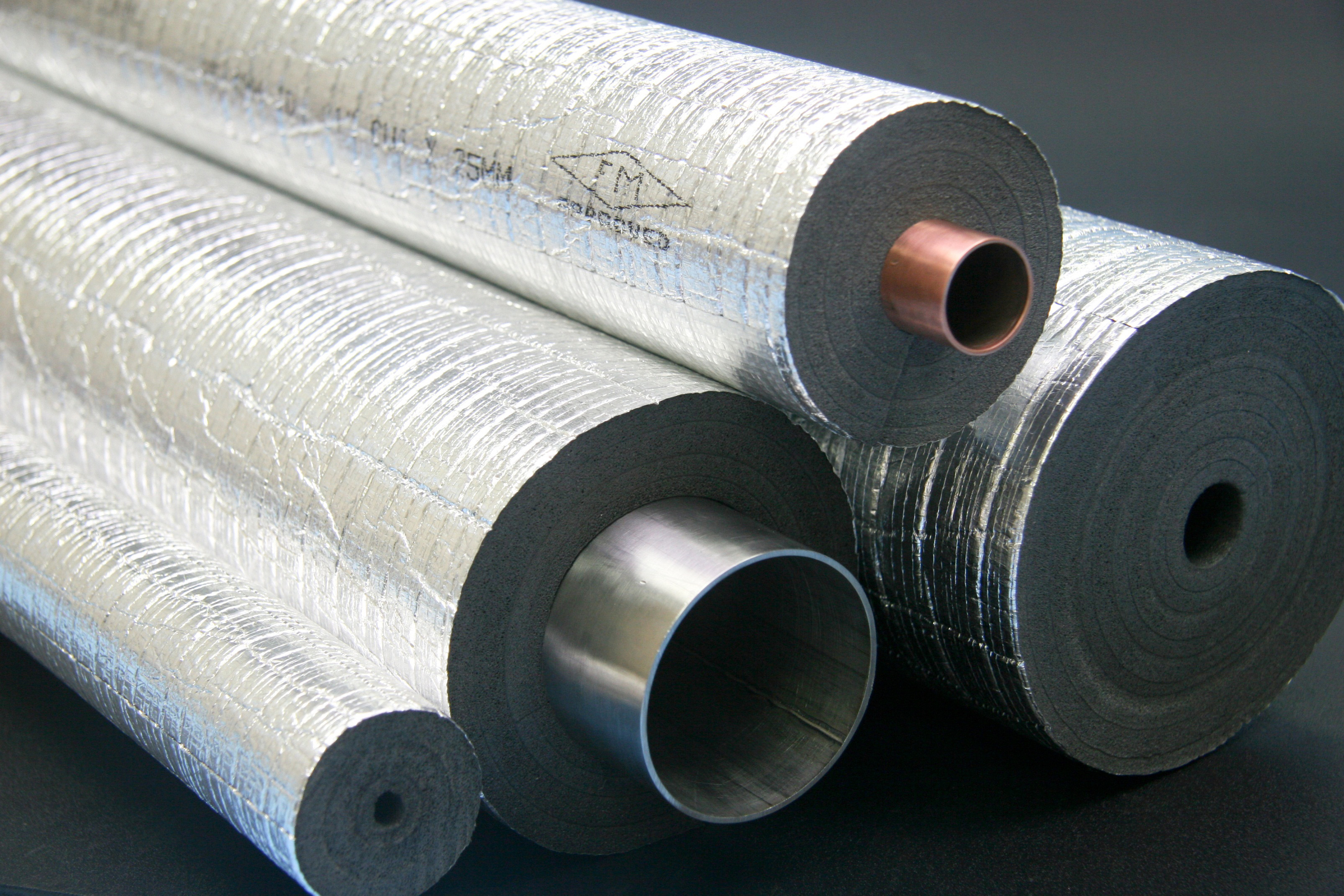Plumbing foam pipe insulation plays a crucial role in maintaining the efficiency and longevity of plumbing systems. Its unique properties and ease of installation make it an indispensable solution for both residential and commercial applications.
This comprehensive guide will delve into the composition, advantages, and installation techniques of plumbing foam pipe insulation. We will also explore different types available in the market and provide maintenance tips to ensure optimal performance.
Properties and Characteristics of Plumbing Foam Pipe Insulation

Plumbing foam pipe insulation is a flexible, lightweight material used to insulate pipes in plumbing systems. It is composed of a closed-cell polyethylene foam, which provides excellent thermal insulation properties. Foam insulation is available in various densities, thicknesses, and forms, including tubes, sheets, and rolls, to accommodate different pipe sizes and insulation requirements.
Advantages
- Low thermal conductivity:Foam insulation has a low thermal conductivity, which means it effectively resists heat flow, helping to maintain desired water temperatures in pipes.
- Flexibility:Foam insulation is highly flexible, making it easy to install around pipes, even in tight spaces or with complex configurations.
- Moisture resistance:Closed-cell foam insulation is resistant to moisture, preventing condensation and corrosion on pipes.
- Sound dampening:Foam insulation can help reduce noise from water flow in pipes, providing a quieter environment.
- Durability:Foam insulation is durable and can withstand a wide range of temperatures and environmental conditions.
Disadvantages
- Combustibility:Foam insulation is combustible and can release toxic fumes when exposed to high temperatures.
- Susceptibility to UV radiation:Foam insulation can degrade over time when exposed to direct sunlight.
- Cost:Foam insulation can be more expensive than other types of pipe insulation, such as fiberglass or rubber.
Installation and Application Techniques: Plumbing Foam Pipe Insulation
Installing plumbing foam pipe insulation is a crucial step in ensuring optimal insulation performance and energy efficiency. By following the proper techniques, you can achieve a snug fit and prevent heat loss or gain, maximizing the insulation’s effectiveness.
Materials and Tools Required
- Plumbing foam pipe insulation (appropriate diameter and thickness)
- Measuring tape or ruler
- Utility knife or scissors
- Insulation tape or adhesive
- Gloves (optional)
Step-by-Step Installation Instructions
- Measure and Cut:Measure the length of the pipe to be insulated and cut the foam insulation to the appropriate size. Use a sharp knife or scissors for a clean cut.
- Slip on the Insulation:Slide the foam insulation onto the pipe, ensuring a snug fit. It should fit tightly without gaps or overlaps.
- Secure with Tape:Wrap insulation tape or adhesive around the insulation at the seam, overlapping slightly. This will hold the insulation in place and prevent it from shifting.
- Additional Layers:For increased insulation value, you can apply multiple layers of foam insulation. Repeat steps 1-3 for each additional layer.
- Finish with End Caps:If the insulation extends to the ends of the pipe, use foam end caps to seal the gaps and prevent heat loss.
Tips and Best Practices
- Wear gloves to protect your hands from insulation particles.
- Ensure the insulation is dry before installing it.
- Avoid compressing the insulation too tightly, as this can reduce its effectiveness.
- Inspect the insulation regularly for any damage or deterioration.
- Consider using a vapor barrier to prevent moisture from penetrating the insulation.
Types and Varieties of Plumbing Foam Pipe Insulation

Foam pipe insulation is a crucial component in plumbing systems, offering protection and energy efficiency. Understanding the various types available empowers you to make informed decisions based on your specific plumbing needs.
Types of Foam Pipe Insulation, Plumbing foam pipe insulation
The market offers a diverse range of foam pipe insulation types, each with distinct properties:
- Polyethylene Foam Insulation:Lightweight, flexible, and cost-effective, it provides excellent insulation and moisture resistance.
- Polystyrene Foam Insulation:Durable and impact-resistant, it offers high R-values and sound dampening properties.
- Phenolic Foam Insulation:Rigid and fire-resistant, it is ideal for high-temperature applications.
- Elastomeric Foam Insulation:Closed-cell structure provides exceptional moisture resistance and flexibility, making it suitable for irregular surfaces.
Comparative Analysis
To guide your selection, consider the following comparative factors:
- R-Value:Measures insulation effectiveness; higher R-values indicate better insulation.
- Thickness:Determines the level of insulation provided; thicker insulation offers higher R-values.
- Durability:Impacts the longevity and performance of the insulation.
Suitability for Various Applications
The choice of foam pipe insulation type depends on the specific plumbing application:
- Cold Water Lines:Polyethylene or polystyrene foam insulation with moderate R-values is suitable.
- Hot Water Lines:Polystyrene or phenolic foam insulation with high R-values is recommended.
- Outdoor Pipes:Elastomeric or polyethylene foam insulation with moisture resistance and UV protection is ideal.
Maintenance and Troubleshooting

Regular maintenance is essential for preserving the effectiveness and longevity of plumbing foam pipe insulation. It involves inspecting, cleaning, and addressing any issues that may arise to ensure optimal insulation performance.
To maintain foam pipe insulation, regular inspections should be conducted to identify any damage, such as tears, punctures, or loose sections. These inspections should also check for moisture accumulation, which can compromise the insulation’s insulating properties.
Cleaning
Cleaning foam pipe insulation is crucial to maintain its effectiveness. It involves removing dirt, dust, and other debris that may accumulate over time. Gentle cleaning methods, such as using a soft brush or cloth, are recommended to avoid damaging the insulation.
Troubleshooting
Common problems that may arise with foam pipe insulation include:
- Moisture accumulation:This can occur due to condensation or water leaks. Inspect the insulation for any signs of moisture and address the source of the leak.
- Loose or damaged insulation:This can result from improper installation or external factors. Re-secure the insulation or replace damaged sections as needed.
- Reduced insulation effectiveness:This can be caused by aging, compression, or improper installation. Inspect the insulation for any signs of wear or damage and consider replacing it if necessary.
Wrap-Up

By understanding the properties, applications, and maintenance requirements of plumbing foam pipe insulation, you can make informed decisions that will enhance the efficiency and durability of your plumbing system. Embrace the benefits of foam insulation and experience the difference it makes in preserving the integrity of your pipes and reducing energy consumption.
